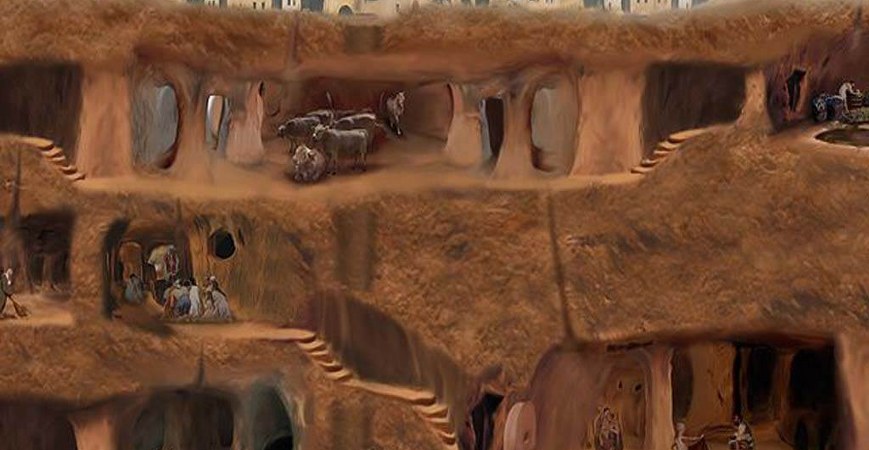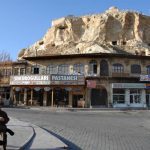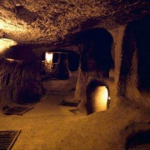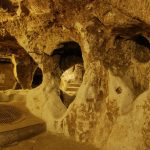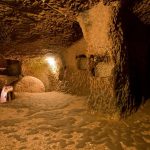The Church in Derinkuyu Underground City Cappadocia (Kappadokia),
The church on the lowest floor is in the form of a cross measuring 10 meters in width, 25 meters in length and 3,5 meters in height. Some scholars call the church clover shaped and thus the coat-of-arms of the Hittites. Exactly opposite the church is a hall with three columns hewn out of the rock; it was both a meeting hall and a torture chamber. Two of the columns have places for placing candles, or, in the opinion of some, for dying prisoners. It is said that the skeleton that was dug up from the grave at the end of the corridor to the west of this hall was sent to Ankara for examination. Derinkuyu has the 450-500 underground settlements similar to the underground city just described. These are still to be investigated. They have about 600 exits, and since some of these open into houses which are in use now, their first floors are employed as storage rooms by the owners. The lower stories have partially filled up with earth when ceilings fell in, and are difficult to visit. It is not exactly known where the earth and rubble excavated from this underground city of 18-20 stories covering four km2 and were 20.000 households could live was dumped. Some suggest that a hill to the west of the town called Soddele is the site. Others think that the excavated earth was dumped into a ravine through which a brook flowed.
The underground city has streets similar to those of a normal town. The first three stories are closely linked to each other and it is believed that 2.000 households, that is to say, 10.000 people lived here. Some parts of the city are thought to have been dug by Arabs taken prisoners by the Byzantines. Hundreds of thousands of slaves labored for thirty years to build the Pyramids. One may wonder how many thousands of laborers worked for years under the whips of overseers to build the underground city. This is a question that cannot be answered yet.

